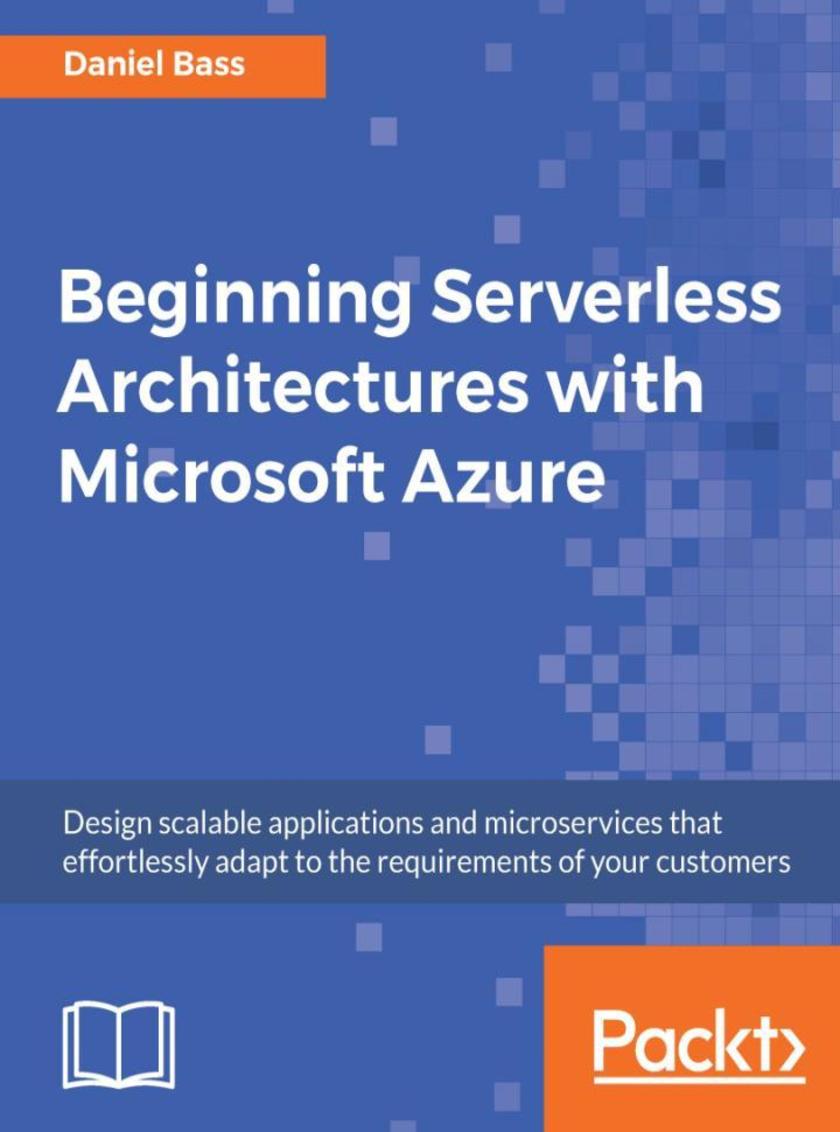
Beginning Serverless Architectures with Microsoft Azure
¥26.15
Migrating your application to a cloud-based serverless architecture doesn’t have to be difficult. Reduce complexity and minimize the time you spend administering servers or worrying about availability with this comprehensive guide to serverless applications on Azure. Key Features *Provides information on integration of Azure products *Plan and implement your own serverless backend to meet tried-and-true development standards *Includes step-by-step instructions to help you navigate advanced concepts and application integrations Book Description Many businesses are rapidly adopting a microservices-first approach to development, driven by the availability of new commercial services like Azure Functions and AWS Lambda. In this book, we’ll show you how to quickly get up and running with your own serverless development on Microsoft Azure. We start by working through a single function, and work towards integration with other Azure services like App Insights and Cosmos DB to handle common user requirements like analytics and highly performant distributed storage. We finish up by providing you with the context you need to get started on a larger project of your own choosing, leaving you equipped with everything you need to migrate to a cloud-first serverless solution. What you will learn *Identify the key advantages and disadvantages of serverless development *Build a fully-functioning serverless application and utilize a wide variety of Azure services *Create, deploy, and manage your own Azure Functions in the cloud *Implement core design principles for writing effective serverless code Who this book is for This book is ideal for back-end developers or engineers who want a quick hands-on introduction to developing serverless applications within the Microsoft ecosystem.
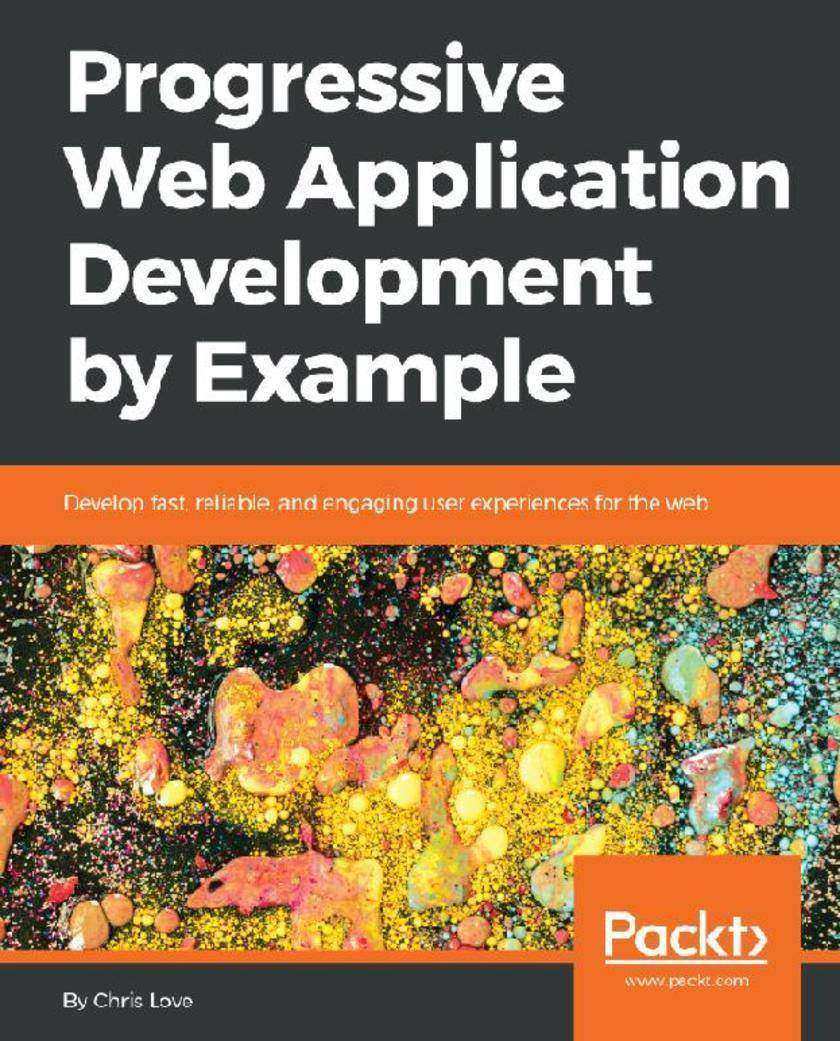
Progressive Web Application Development by Example
¥69.75
Leverage the full potential of the web to make your web sites better than native applications for every platform. Key Features *Explore different models and patterns required to develop progressive web applications *Create applications requiring shorter runtime for attracting more users *Study different projects to understand the fundamentals of progressive web applications Book Description Are you a developer that wants to create truly cross-platform user experiences with a minimal footprint, free of store restrictions and features customers want? Then you need to get to grips with Progressive Web Applications (PWAs), a perfect amalgamation of web and mobile applications with a blazing-fast response time. Progressive Web Application Development by Example helps you explore concepts of the PWA development by enabling you to develop three projects, starting with a 2048 game. In this game, you will review parts of a web manifest file and understand how a browser uses properties to define the home screen experience. You will then move on to learning how to develop and use a podcast client and be introduced to service workers. The application will demonstrate how service workers are registered and updated. In addition to this, you will review a caching API so that you have a firm understanding of how to use the cache within a service worker, and you'll discover core caching strategies and how to code them within a service worker. Finally, you will study how to build a tickets application, wherein you’ll apply advanced service worker techniques, such as cache invalidation. Also, you'll learn about tools you can use to validate your applications and scaffold them for quality and consistency. By the end of the book, you will have walked through browser developer tools, node modules, and online tools for creating high-quality PWAs. What you will learn *Explore the core principles of PWAs *Study the three main technical requirements of PWAs *Discover enhancing requirements to make PWAs transcend native apps and traditional websites *Create and install PWAs on common websites with a given HTTPS as the core requirement *Get acquainted with the service worker life cycle *Define service worker caching patterns *Apply caching strategies to three different website scenarios *Implement best practices for web performance Who this book is for Progressive Web Application Development by Example is for you if you’re a web developer or front-end designer who wants to ensure improved user experiences. If you are an application developer with knowledge of HTML, CSS, and JavaScript, this book will help you enhance your skills in order to develop progressive web applications, the future of app development.
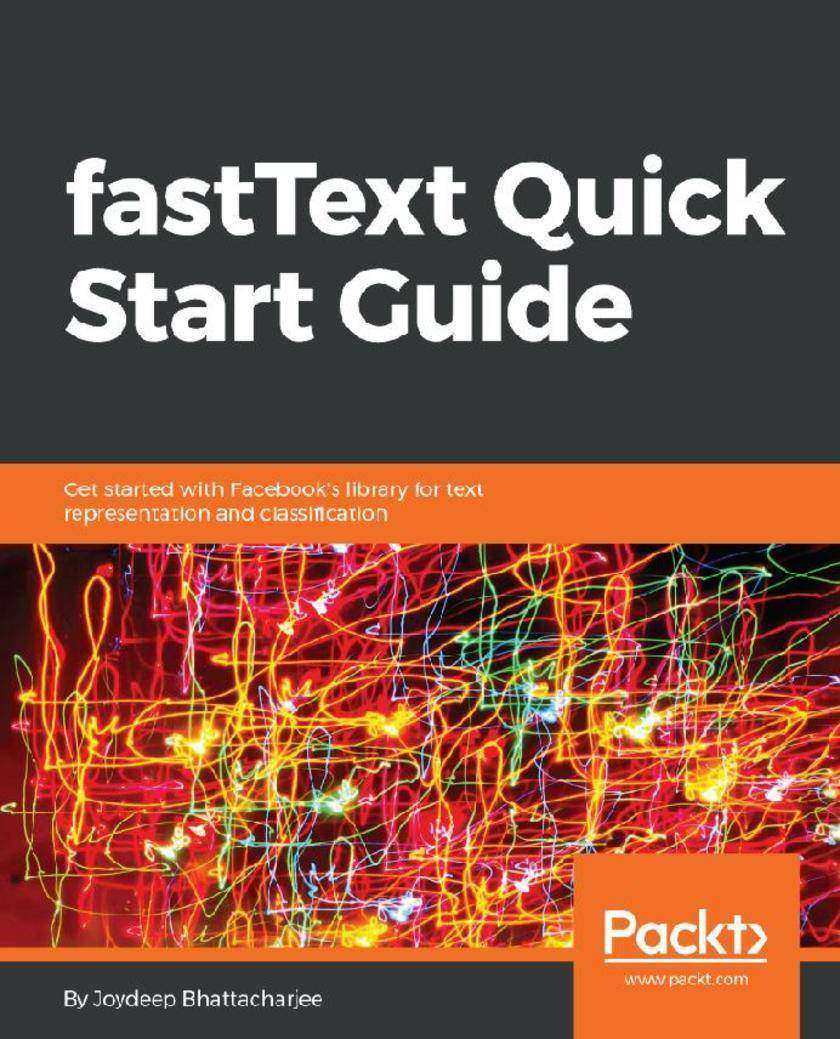
fastText Quick Start Guide
¥52.31
Perform efficient fast text representation and classification with Facebook's fastText library Key Features *Introduction to Facebook's fastText library for NLP *Perform efficient word representations, sentence classification, vector representation *Build better, more scalable solutions for text representation and classification Book Description Facebook's fastText library handles text representation and classification, used for Natural Language Processing (NLP). Most organizations have to deal with enormous amounts of text data on a daily basis, and gaining efficient data insights requires powerful NLP tools such as fastText.? This book is your ideal introduction to fastText. You will learn how to create fastText models from the command line, without the need for complicated code. You will explore the algorithms that fastText is built on and how to use them for word representation and text classification.? Next, you will use fastText in conjunction with other popular libraries and frameworks such as Keras, TensorFlow, and PyTorch.? Finally, you will deploy fastText models to mobile devices. By the end of this book, you will have all the required knowledge to use fastText in your own applications at work or in projects. What you will learn *Create models using the default command line options in fastText *Understand the algorithms used in fastText to create word vectors *Combine command line text transformation capabilities and the fastText library to implement a training, validation, and prediction pipeline *Explore word representation and sentence classification using fastText *Use Gensim and spaCy to load the vectors, transform, lemmatize, and perform other NLP tasks efficiently *Develop a fastText NLP classifier using popular frameworks, such as Keras, Tensorflow, and PyTorch Who this book is for This book is for data analysts, data scientists, and machine learning developers who want to perform efficient word representation and sentence classification using Facebook's fastText library. Basic knowledge of Python programming is required.

Git Version Control Cookbook
¥78.47
A series of practical recipes to simplify the Git learning experience and increase your productivity when using Git version control Key Features *Explore practical recipes to use Git’s most advanced features *Learn how Git references its objects and how history is recorded *Use reflog and git fsck to recover lost information Book Description Git is one of the most popular tools for versioning. Git Version Control Cookbook builds on the success of the previous edition and provides you with an up-to-date guide to solving problems related to versioning. You’ll start by learning about the Git data model and how it stores files and looks at commits. By using simple commands, you’ll learn how to navigate through the database. Once you have accustomed yourself to the basics, you’ll explore techniques to configure Git with comprehensive examples and configuration targets. You’ll gain insights into improving your understanding of branches and recovery from mistakes — right from committing to a wrong branch to recovering lost commits or files. You’ll then move on to discovering the features that Git rebase has to offer and use regular Git merge on other branches. You’ll explore Git notes and learn how to utilize the update, list, and search commands. In addition to this, you’ll learn how to extract metadata from repositories and automate your daily tasks using Git hooks. You’ll then study in detail repository maintenance, patching, and offline sharing. By the end of the book, you’ll have grasped various tips and tricks for everyday usage, while increasing your knowledge of Git providers, integrations, and clients. What you will learn *Understand the Git data model and use commands to navigate the database *Find out how you can recover lost commits or files *Force a rebase on some branches and use regular Git to merge on the rest *Master the techniques required to extract metadata from repositories *Explore Git notes and learn about the various features that it offers *See how to decode different subcommands Who this book is for The Git Version Control Cookbook is for you if you are a developer or Build Release manager looking for a full-fledged practical guide that will take your Git knowledge to the next level. Basic knowledge of GNU tools and shell or bash scripting is needed.
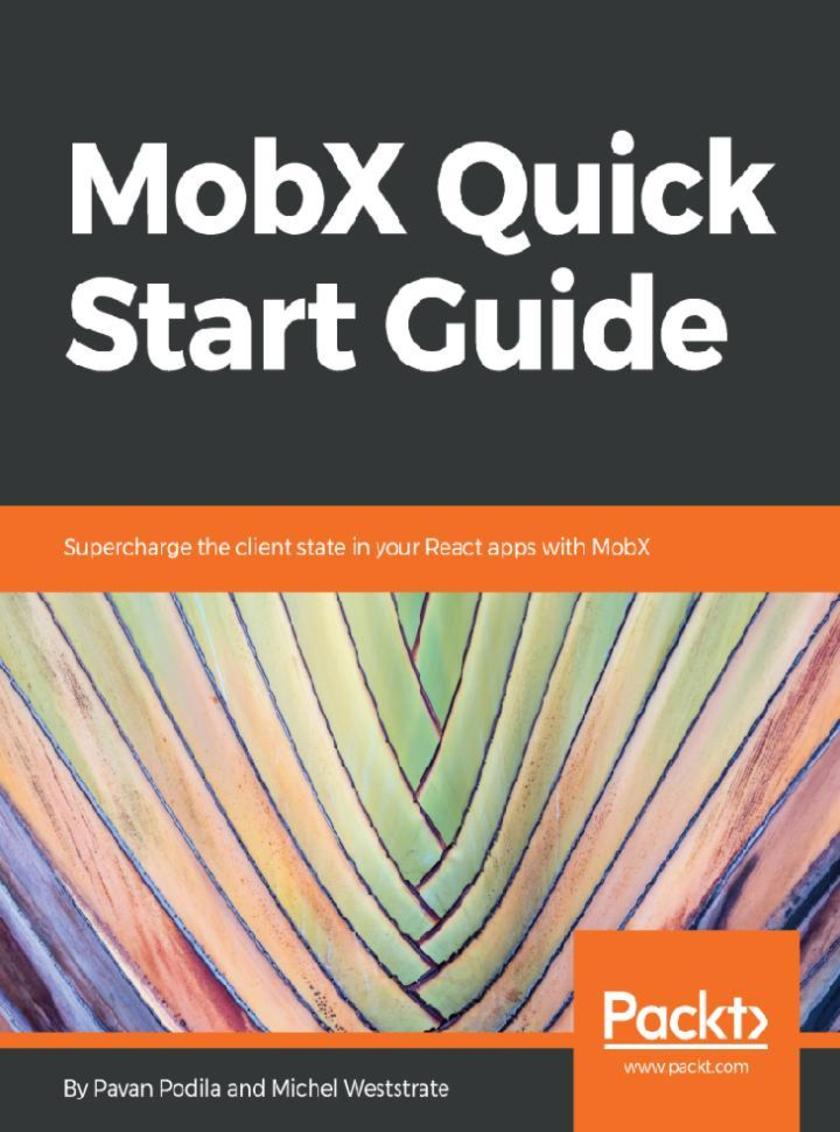
MobX Quick Start Guide
¥52.31
Apply functional Reactive programming for simple and scalable state management with MobX Key Features *The easiest way to learn MobX to enhance your client-side state-management *Understand how the concepts and components fit together *Work through different state management scenarios with MobX Book Description MobX is a simple and highly scalable state management library in JavaScript. Its abstractions can help you manage state in small to extremely large applications. However, if you are just starting out, it is essential to have a guide that can help you take the first steps. This book aims to be that guide that will equip you with the skills needed to use MobX and effectively handle the state management aspects of your application. You will first learn about observables, actions, and reactions: the core concepts of MobX. To see how MobX really shines and simplifies state management, you'll work through some real-world use cases. Building on these core concepts and use cases, you will learn about advanced MobX, its APIs, and libraries that extend MobX. By the end of this book, you will not only have a solid conceptual understanding of MobX, but also practical experience. You will gain the confidence to tackle many of the common state management problems in your own projects. What you will learn *Explore the fundamental concepts of MobX, such as observables, actions, and reactions *Use observables to track state and react to its changes with validations and visual feedback (via React Components) *Create a MobX observable from different data types *Define form data as an observable state and tackle sync and async form validations *Use the special APIs to directly manipulate observables, tracking its changes, and discovering the reasons behind a change *Tackle any state management issue you may have in your app by combining mobx-utils and mobx-state-tree *Explore the internals of the MobX reactive system by diving into its inner workings Who this book is for This book is for web developers who want to implement easy and scalable state management for their apps. Knowledge of HTML, CSS, and JavaScript is assumed
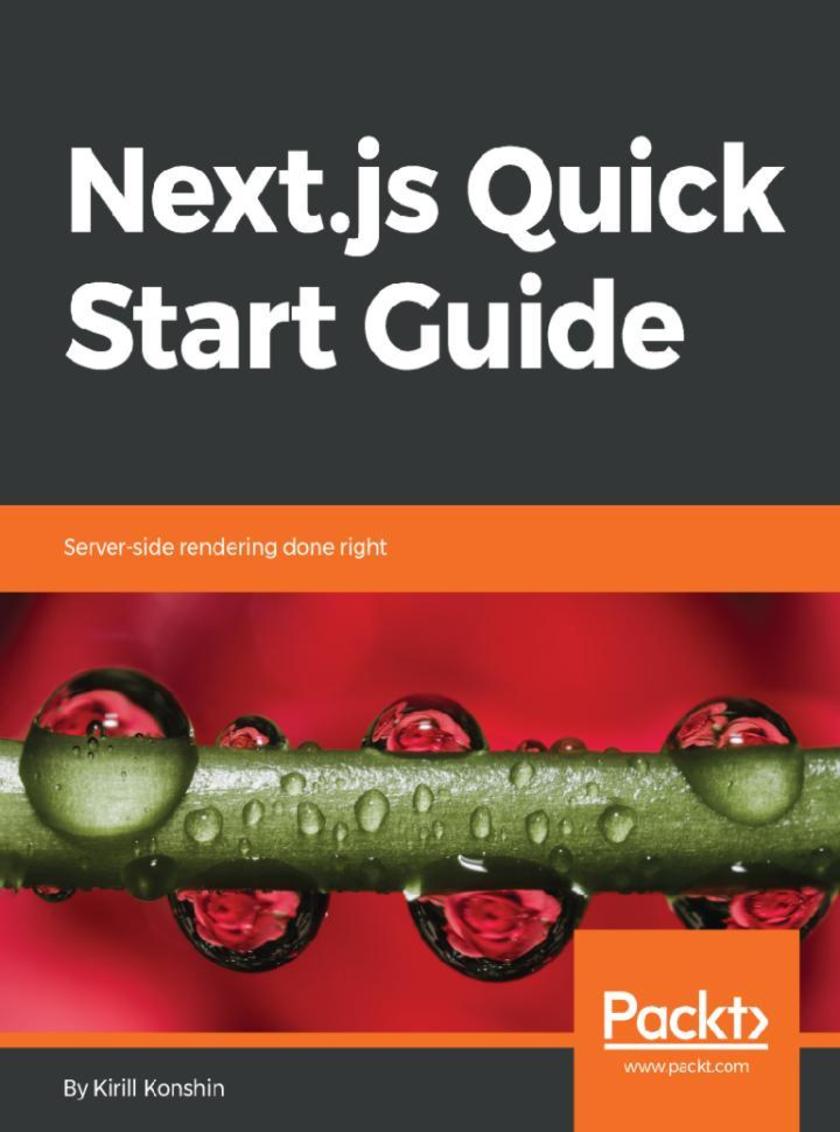
Next.js Quick Start Guide
¥52.31
Create, build and deploy universal JavaScript applications using Next.js 6.0 Key Features *Work with the entire tool-chain for developing universal Javascript applications with Next.js *A straightforward guide to implementing server-side rendering *Use Next.js to build SEO-friendly and super fast websites Book Description Next.js is a powerful addition to the ever-growing and dynamic JavaScript world. Built on top of React, Webpack, and Babel, it is a minimalistic framework for server-rendered universal JavaScript applications. This book will show you the best practices for building sites using Next. js, enabling you to build SEO-friendly and superfast websites. This book will guide you from building a simple single page app to a scalable and reliable client-server infrastructure. You will explore code sharing between client and server, universal modules, and server-side rendering. The book will take you through the core Next.js concepts that everyone is talking about – hot reloading, code splitting, routing, server rendering, transpilation, CSS isolation, and more. You will learn ways of implementing them in order to create your own universal JavaScript application. You will walk through the building and deployment stages of your applications with the JSON API,customizing the confguration, error handling,data fetching, deploying to production, and authentication. What you will learn *Explore the benefts of server-side rendering with Next.js *Create and link JavaScript modules together by understanding code splitting and bundling *Create website pages and wire them together through website navigation *Extend your application with additional Webpack loaders and features, as well as custom Babel plugins and presets *Use GraphQL and Apollo frameworks with Next.js to fetch data and receive push notifcations *Design and implement core modules, such as logging and authentication, and then more complex solutions for access control and business rule management *Write tests and use online CI tools such as Travis, GitLab, and more *Build a Docker-based container for your app and deploy it to online services such as Heroku and Now.sh Who this book is for This book is for JavaScript developers who want to learn how to generate server-rendered applications.
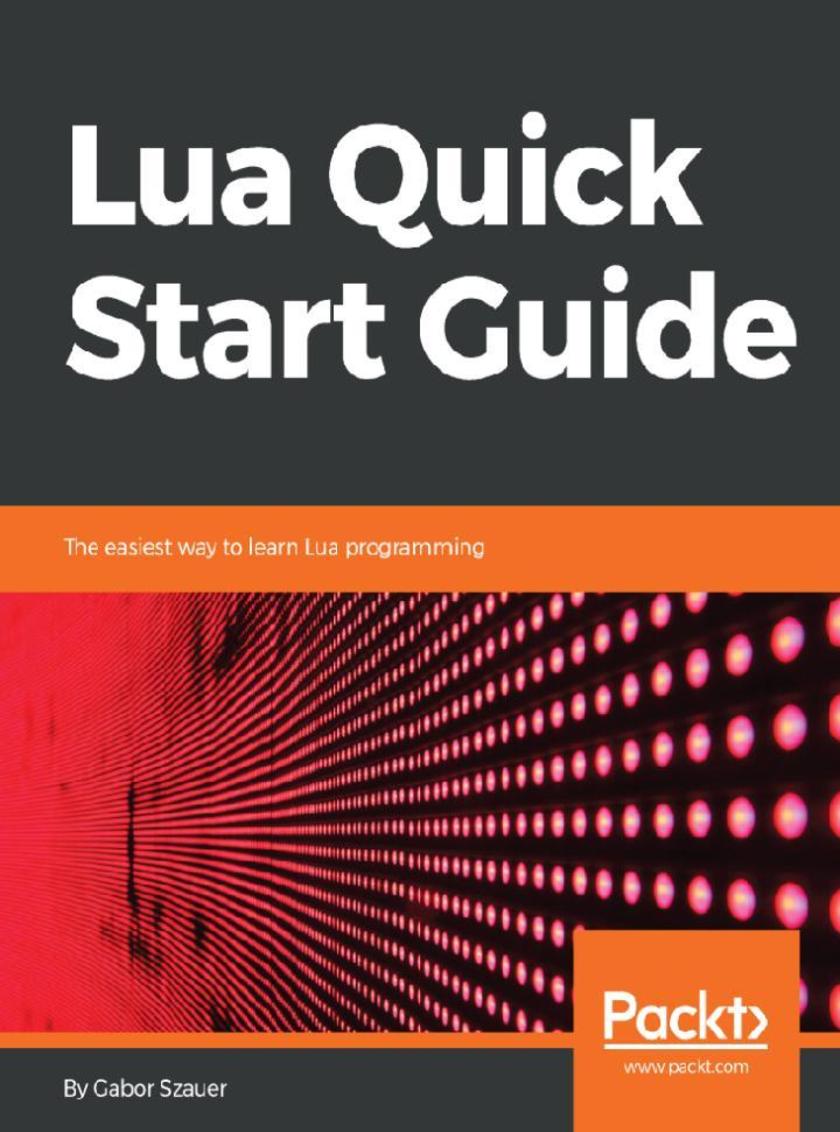
Lua Quick Start Guide
¥52.31
The easiest way to learn Lua programming Key Features *The easiest way to learn Lua coding *Use the Lua standard libraries and debug Lua code *Embed Lua as a scripting language using the Lua C API Book Description Lua is a small, powerful and extendable scripting/programming language that can be used for learning to program, and writing games and applications, or as an embedded scripting language. There are many popular commercial projects that allow you to modify or extend them through Lua scripting, and this book will get you ready for that. This book is the easiest way to learn Lua. It introduces you to the basics of Lua and helps you to understand the problems it solves. You will work with the basic language features, the libraries Lua provides, and powerful topics such as object-oriented programming. Every aspect of programming in Lua, variables, data types, functions, tables, arrays and objects, is covered in sufficient detail for you to get started. You will also find out about Lua's module system and how to interface with the operating system. After reading this book, you will be ready to use Lua as a programming language to write code that can interface with the operating system, automate tasks, make playable games, and much more. This book is a solid starting point for those who want to learn Lua in order to move onto other technologies such as Love2D or Roblox. A quick start guide is a focused, shorter title that provides a faster paced introduction to a technology. It is designed for people who don't need all the details at this point in their learning curve. This presentation has been streamlined to concentrate on the things you really need to know. What you will learn *Understand the basics of programming the Lua language *Understand how to use tables, the data structure that makes Lua so powerful *Understand object-oriented programming in Lua using metatables *Understand standard LUA libraries for math, file io, and more *Manipulate string data using Lua *Understand how to debug Lua applications quickly and effciently *Understand how to embed Lua into applications with the Lua C API Who this book is for This book is for developers who want to get up and running with Lua. This book is ideal for programmers who want to learn to embed Lua in their own applications, as well as for beginner programmers who have never coded before.
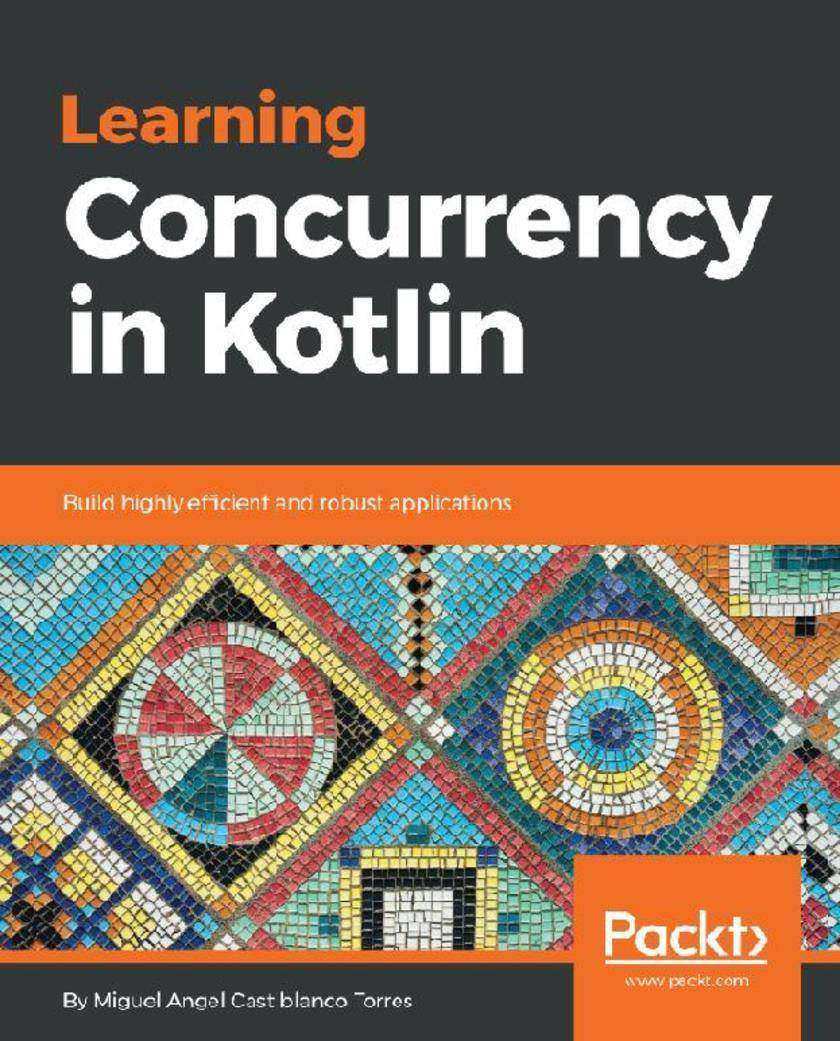
Learning Concurrency in Kotlin
¥78.47
Leverage the power of Elixir programming language to solve practical problems associated with scalability, concurrency, fault tolerance, and high availability. Key Features *Enhance your Elixir programming skills using its powerful tools and abstractions *Discover how to develop a full-fledged file server *Understand how to use Phoenix to create a web interface for your application. Book Description Running concurrent, fault-tolerant applications that scale is a very demanding responsibility. After learning the abstractions that Elixir gives us, developers are able to build such applications with inconceivable low effort. There is a big gap between playing around with Elixir and running it in production, serving live requests. This book will help you fll this gap by going into detail on several aspects of how Elixir works and showing concrete examples of how to apply the concepts learned to a fully fledged application. In this book, you will learn how to build a rock-solid application, beginning by using Mix to create a new project. Then you will learn how the use of Erlang's OTP, along with the Elixir abstractions that run on top of it (such as GenServer and GenStage), that allow you to build applications that are easy to parallelize and distribute. You will also master supervisors (and supervision trees), and comprehend how they are the basis for building fault-tolerant applications. Then you will use Phoenix to create a web interface for your application. Upon fnishing implementation, you will learn how to take your application to the cloud, using Kubernetes to automatically deploy, scale, and manage it. Last, but not least, you will keep your peace of mind by learning how to thoroughly test and then monitor your application. What you will learn *Use Elixir tools, including IEx and Mix *Find out how an Elixir project is structured and how to create umbrella applications *Discover the power of supervision trees, the basis for fault-tolerance *Create a Domain-Specifc Language (DSL) that abstracts complexity *Create a blazing-fast web interface for your application with Phoenix *Set up an automatic deployment process for the cloud *Monitor your application and be warned if anything unexpected happens Who this book is for Mastering Elixir is for you if you have experience in Elixir programming and want to take it to the next level. This Elixir book shows you how to build, deploy, and maintain robust applications, allowing you to go from tinkering with Elixir on side projects to using it in a live environment. However, no prior knowledge of Elixir is required to enjoy the complex topics covered in the book.
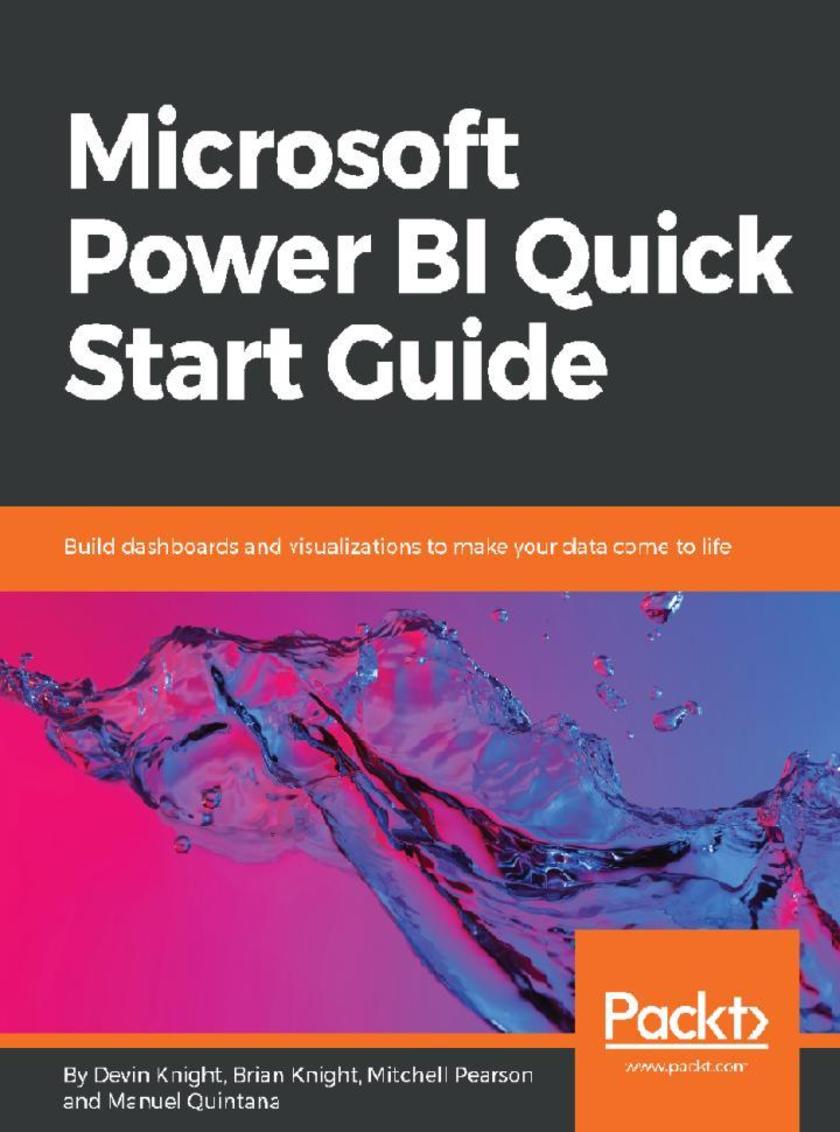
Microsoft Power BI Quick Start Guide
¥52.31
Develop robust, Scala-powered projects with the help of machine learning libraries such as SparkML to harvest meaningful insight Key Features *Gain hands-on experience in building data science projects with Scala *Exploit powerful functionalities of machine learning libraries *Use machine learning algorithms and decision tree models for enterprise apps Book Description Scala, together with the Spark Framework, forms a rich and powerful data processing ecosystem. Modern Scala Projects is a journey into the depths of this ecosystem. The machine learning (ML) projects presented in this book enable you to create practical, robust data analytics solutions, with an emphasis on automating data workflows with the Spark ML pipeline API. This book showcases or carefully cherry-picks from Scala’s functional libraries and other constructs to help readers roll out their own scalable data processing frameworks. The projects in this book enable data practitioners across all industries gain insights into data that will help organizations have strategic and competitive advantage. Modern Scala Projects focuses on the application of supervisory learning ML techniques that classify data and make predictions. You'll begin with working on a project to predict a class of flower by implementing a simple machine learning model. Next, you'll create a cancer diagnosis classification pipeline, followed by projects delving into stock price prediction, spam filtering, fraud detection, and a recommendation engine. By the end of this book, you will be able to build efficient data science projects that fulfil your software requirements. What you will learn *Create pipelines to extract data or analytics and visualizations *Automate your process pipeline with jobs that are reproducible *Extract intelligent data efficiently from large, disparate datasets *Automate the extraction, transformation, and loading of data *Develop tools that collate, model, and analyze data *Maintain the integrity of data as data flows become more complex *Develop tools that predict outcomes based on “pattern discovery” *Build really fast and accurate machine-learning models in Scala Who this book is for Modern Scala Projects is for Scala developers who would like to gain some hands-on experience with some interesting real-world projects. Prior programming experience with Scala is necessary.
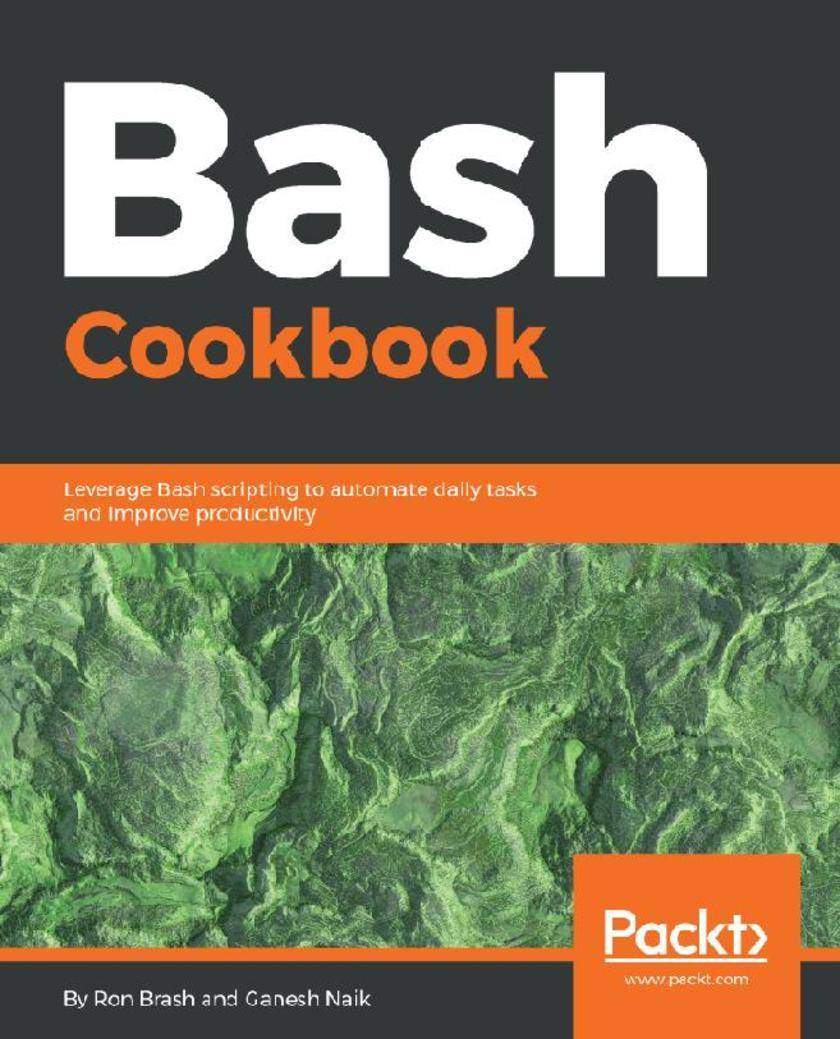
Bash Cookbook
¥69.75
Learn all the fundamentals of PHP with a book that blends theory with practice to build up the skills you need for modern web development. Key Features *Brush up on basic PHP 7 syntax and work with variables, data types, arrays, and loops *Master advanced concepts like building your own frameworks and creating your own applications *Apply your newly learned PHP skills to a variety of real-life business scenarios Book Description PHP is the preferred server-side scripting language for tech giants such as Facebook, Wikipedia, and Tumblr despite full-stack JavaScript gaining popularity with upcoming developers. This is because PHP performs better when dealing with heavy computations on the back end. In this book, you’ll learn everything you need to get up and running with the latest version of PHP, including package management with tools such as composer, secure database operations, and a whole host of other best practices that will help you stay a step ahead of traditional programmers. What you will learn *Understand the fundamentals of PHP and work with classes and inheritance *Learn about database operations and package management with composer *Tackle common security concerns and pitfalls using authentication and validation *Build effective PHP applications and frameworks for your business needs Who this book is for If you’re already familiar with another programming language and want to learn about the fundamentals of PHP programming, you’ll find the flow of this book to be an ideal fit. Having a prior understanding of HTML, MySQL, CSS, and JavaScript will be beneficial, but is not mandatory.
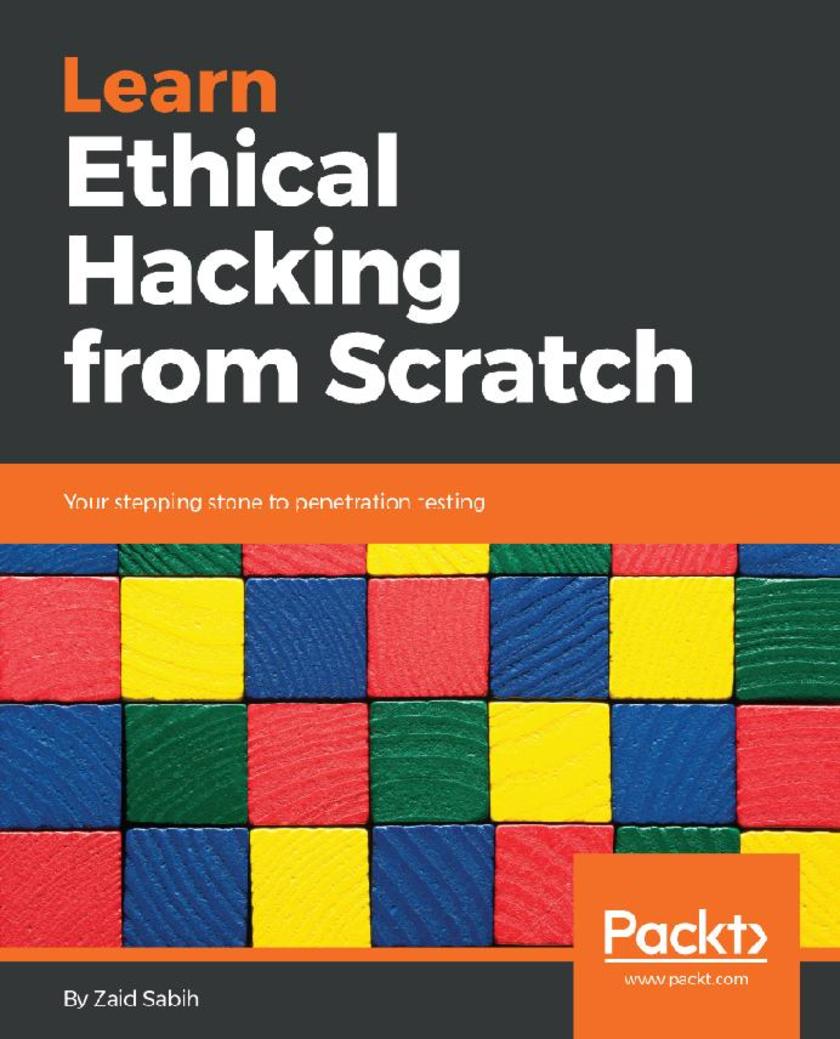
Learn Ethical Hacking from Scratch
¥78.47
Install, Configure and Setup different connections with pfSense Key Features *Build firewall and routing solutions with PfSense. *Learn how to create captive portals, how to connect Pfsense to your https environment and so on. *Practical approach towards building firewall solutions for your organization Book Description As computer networks become ubiquitous, it has become increasingly important to both secure and optimize our networks. pfSense, an open-source router/firewall, provides an easy, cost-effective way of achieving this – and this book explains how to install and configure pfSense in such a way that even a networking beginner can successfully deploy and use pfSense. This book begins by covering networking fundamentals, deployment scenarios, and hardware sizing guidelines, as well as how to install pfSense. The book then covers configuration of basic services such as DHCP, DNS, and captive portal and VLAN configuration. Careful consideration is given to the core firewall functionality of pfSense, and how to set up firewall rules and traffic shaping. Finally, the book covers the basics of VPNs, multi-WAN setups, routing and bridging, and how to perform diagnostics and troubleshooting on a network. What you will learn *Install pfSense *Configure additional interfaces, and enable and configure DHCP *Understand Captive portal *Understand firewalls and NAT, and traffic shaping *Learn in detail about VPNs *Understand Multi-WAN *Learn about routing and bridging in detail *Understand the basics of diagnostics and troubleshooting networks Who this book is for This book is towards any network security professionals who want to get introduced to the world of firewalls and network configurations using Pfsense. No knowledge of PfSense is required

Learning Salesforce Lightning Application Development
¥61.03
Get to grips with Kibana and its advanced functions to create interactive visualizations and dashboards Key Features *Explore visualizations and perform histograms, stats, and map analytics *Unleash X-Pack and Timelion, and learn alerting, monitoring, and reporting features *Manage dashboards with Beats and create machine learning jobs for faster analytics Book Description Kibana is one of the popular tools among data enthusiasts for slicing and dicing large datasets and uncovering Business Intelligence (BI) with the help of its rich and powerful visualizations. To begin with, Mastering Kibana 6.x quickly introduces you to the features of Kibana 6.x, before teaching you how to create smart dashboards in no time. You will explore metric analytics and graph exploration, followed by understanding how to quickly customize Kibana dashboards. In addition to this, you will learn advanced analytics such as maps, hits, and list analytics. All this will help you enhance your skills in running and comparing multiple queries and filters, influencing your data visualization skills at scale. With Kibana’s Timelion feature, you can analyze time series data with histograms and stats analytics. By the end of this book, you will have created a speedy machine learning job using X-Pack capabilities. What you will learn *Create unique dashboards with various intuitive data visualizations *Visualize Timelion expressions with added histograms and stats analytics *Integrate X-Pack with your Elastic Stack in simple steps *Extract data from Elasticsearch for advanced analysis and anomaly detection using dashboards *Build dashboards from web applications for application logs *Create monitoring and alerting dashboards using Beats Who this book is for Mastering Kibana 6.x is for you if you are a big data engineer, DevOps engineer, or data scientist aspiring to go beyond data visualization at scale and gain maximum insights from their large datasets. Basic knowledge of Elasticstack will be an added advantage, although not mandatory.
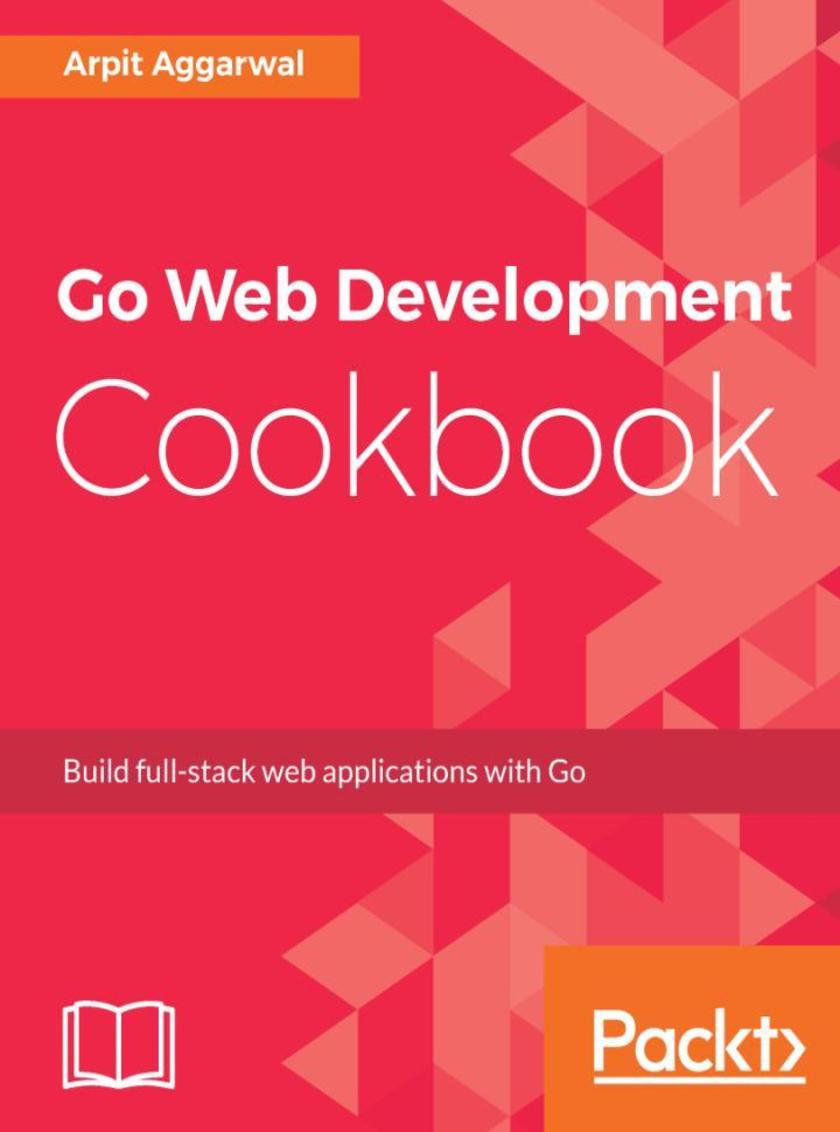
Go Web Development Cookbook
¥81.74
86 recipes on how to build fast, scalable, and powerful web services and applications with Go About This Book ? Become proficient in RESTful web services ? Build scalable, high-performant web applications in Go ? Get acquainted with Go frameworks for web development Who This Book Is For This book is for Go developers interested in learning how to use Go to build powerful web applications. A background in web development is expected. What You Will Learn ? Create a simple HTTP and TCP web server and understand how it works ? Explore record in a MySQL and MongoDB database ? Write and consume RESTful web service in Go ? Invent microservices in Go using Micro – a microservice toolkit ? Create and Deploy the Beego application with Nginx ? Deploy Go web application and Docker containers on an AWS EC2 instance In Detail Go is an open source programming language that is designed to scale and support concurrency at the language level. This gives you the liberty to write large concurrent web applications with ease. From creating web application to deploying them on Amazon Cloud Services, this book will be your one-stop guide to learn web development in Go. The Go Web Development Cookbook teaches you how to create REST services, write microservices, and deploy Go Docker containers. Whether you are new to programming or a professional developer, this book will help get you up to speed with web development in Go. We will focus on writing modular code in Go; in-depth informative examples build the base, one step at a time. You will learn how to create a server, work with static files, SQL, NoSQL databases, and Beego. You will also learn how to create and secure REST services, and create and deploy Go web application and Go Docker containers on Amazon Cloud Services. By the end of the book, you will be able to apply the skills you've gained in Go to create and explore web applications in any domain. Style and approach This book helps you learn core Go concepts faster by taking a recipe-based approach.
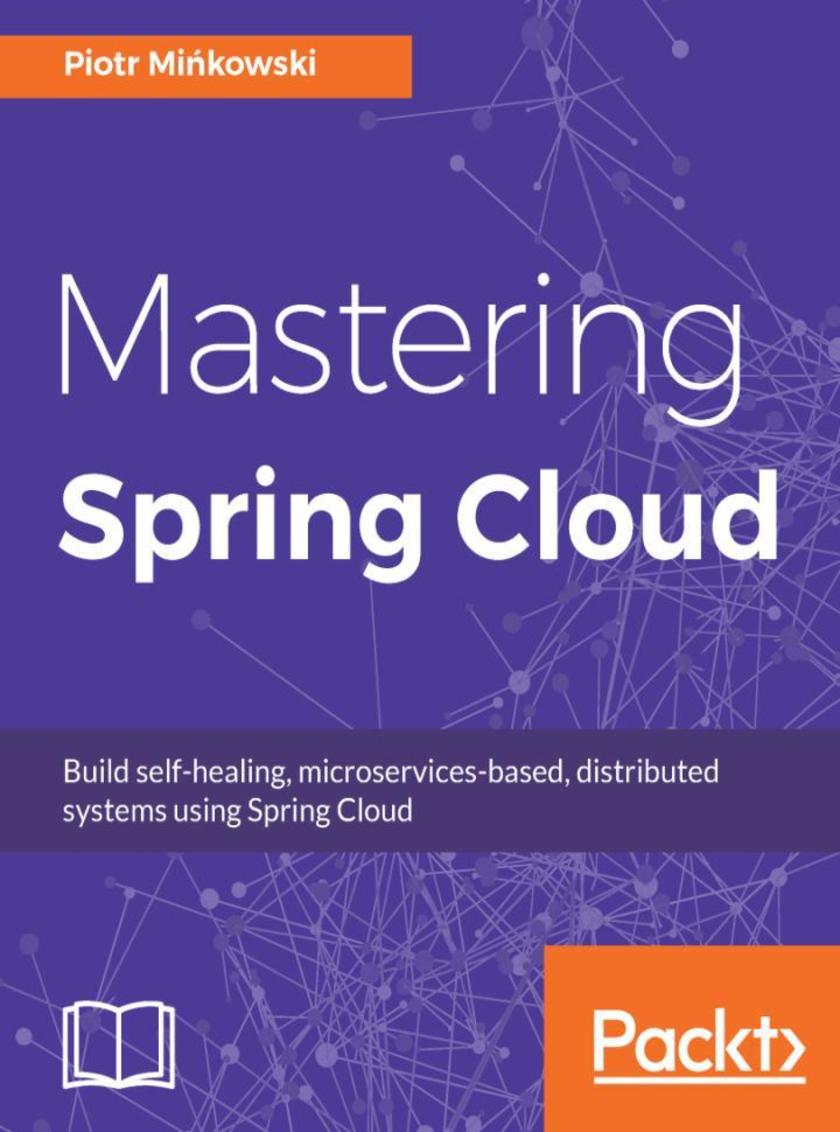
Mastering Spring Cloud
¥90.46
Learn how to build, test, secure, deploy, and efficiently consume services across distributed systems. About This Book ? Explore the wealth of options provided by Spring Cloud for wiring service dependencies in microservice systems. ? Create microservices utilizing Spring Cloud's Netflix OSS ? Architect your cloud-native data using Spring Cloud. Who This Book Is For This book appeals to developers keen to take advantage of Spring cloud, an open source library which helps developers quickly build distributed systems. Knowledge of Java and Spring Framework will be helpful, but no prior exposure to Spring Cloud is required. What You Will Learn ? Abstract Spring Cloud's feature set ? Create microservices utilizing Spring Cloud's Netflix OSS ? Create synchronous API microservices based on a message-driven architecture. ? Explore advanced topics such as distributed tracing, security, and contract testing. ? Manage and deploy applications on the production environment In Detail Developing, deploying, and operating cloud applications should be as easy as local applications. This should be the governing principle behind any cloud platform, library, or tool. Spring Cloud–an open-source library–makes it easy to develop JVM applications for the cloud. In this book, you will be introduced to Spring Cloud and will master its features from the application developer's point of view. This book begins by introducing you to microservices for Spring and the available feature set in Spring Cloud. You will learn to configure the Spring Cloud server and run the Eureka server to enable service registration and discovery. Then you will learn about techniques related to load balancing and circuit breaking and utilize all features of the Feign client. The book now delves into advanced topics where you will learn to implement distributed tracing solutions for Spring Cloud and build message-driven microservice architectures. Before running an application on Docker container s, you will master testing and securing techniques with Spring Cloud. Style and approach This comprehensive guide covers the advanced features of Spring Cloud and communicates them through a practical approach to explore the underlying concepts of how, when, and why to use them.

Java 9 Dependency Injection
¥81.74
Create clean code with Dependency Injection principles About This Book ? Use DI to make your code loosely coupled to manage and test your applications easily on Spring 5 and Google Guice ? Learn the best practices and methodologies to implement DI ? Write more maintainable Java code by decoupling your objects from their implementations Who This Book Is For This book is for Java developers who would like to implement DI in their application. Prior knowledge of the Spring and Guice frameworks and Java programming is assumed. What You Will Learn ? Understand the benefits of DI and fo from a tightly coupled design to a cleaner design organized around dependencies ? See Java 9’s new features and modular framework ? Set up Guice and Spring in an application so that it can be used for DI ? Write integration tests for DI applications ? Use scopes to handle complex application scenarios ? Integrate any third-party library in your DI-enabled application ? Implement Aspect-Oriented Programming to handle common cross-cutting concerns such as logging, authentication, and transactions ? Understand IoC patterns and anti-patterns in DI In Detail Dependency Injection (DI) is a design pattern that allows us to remove the hard-coded dependencies and make our application loosely coupled, extendable, and maintainable. We can implement DI to move the dependency resolution from compile-time to runtime. This book will be your one stop guide to write loosely coupled code using the latest features of Java 9 with frameworks such as Spring 5 and Google Guice. We begin by explaining what DI is and teaching you about IoC containers. Then you’ll learn about object compositions and their role in DI. You’ll find out how to build a modular application and learn how to use DI to focus your efforts on the business logic unique to your application and let the framework handle the infrastructure work to put it all together. Moving on, you’ll gain knowledge of Java 9’s new features and modular framework and how DI works in Java 9. Next, we’ll explore Spring and Guice, the popular frameworks for DI. You’ll see how to define injection keys and configure them at the framework-specific level. After that, you’ll find out about the different types of scopes available in both popular frameworks. You’ll see how to manage dependency of cross-cutting concerns while writing applications through aspect-oriented programming. Towards the end, you’ll learn to integrate any third-party library in your DI-enabled application and explore common pitfalls and recommendations to build a solid application with the help of best practices, patterns, and anti-patterns in DI. Style and approach This book will take an easy-to-understand, step-by-step approach providing hands-on examples at every stage.
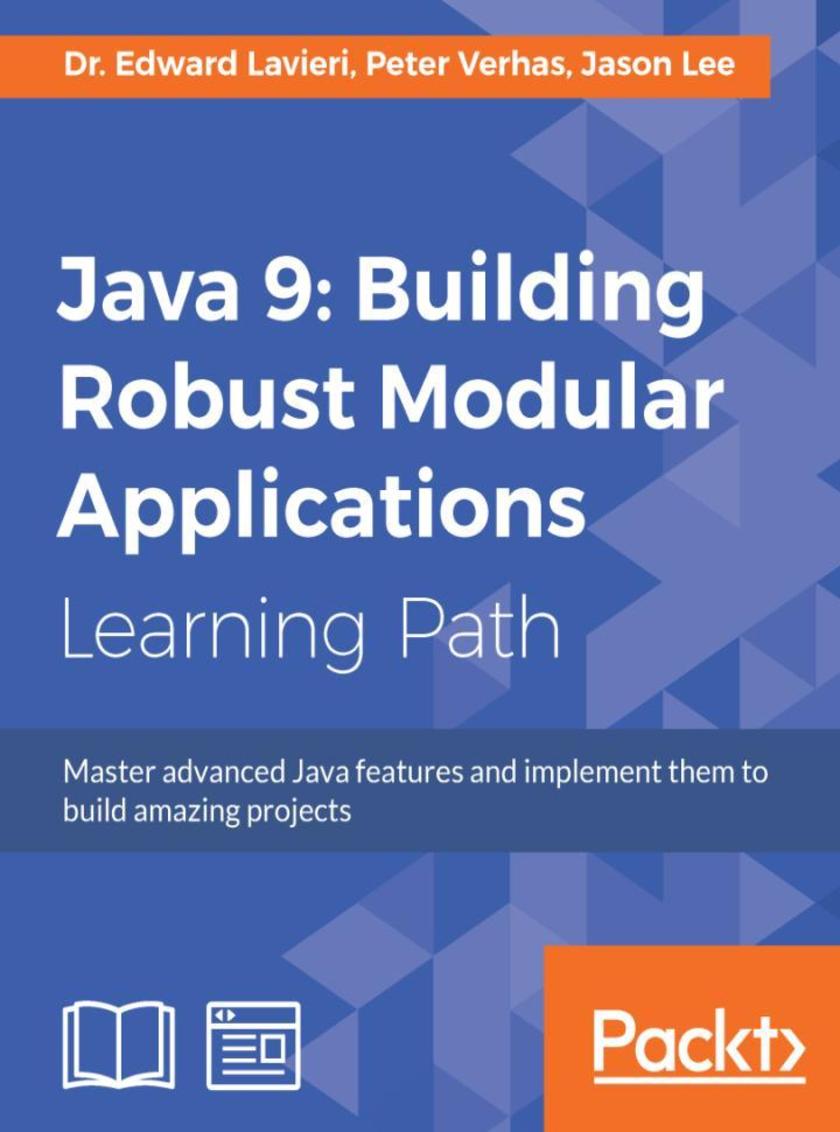
Java 9: Building Robust Modular Applications
¥63.21
Mastering advanced features of Java and implement them to build amazing projects About This Book ? Take advantage of Java's new modularity features to write real-world applications that solve a variety of problems ? Explore the major concepts introduced with Java 9, including modular programming, HTTP 2.0, API changes, and more ? Get to grips with tools, techniques and best practices to enhance application development Who This Book Is For This learning path is for Java developers who are looking to move a level up and learn how to build robust applications in the latest version of Java. What You Will Learn ? Package Java applications as modules using the Java Platform Module System ? Implement process management in Java using the all-new process handling API ? Integrate your applications with third-party services in the cloud ? Interact with mail servers, using JavaMail to build an application that filters spam messages ? Use JavaFX to build rich GUI-based applications, which are an essential element of application development ? Leverage the possibilities provided by the newly introduced Java shell ? Test your application's effectiveness with the JVM harness ? See how Java 9 provides support for the HTTP 2.0 standard In Detail Java 9 and its new features add to the richness of the language; Java is one of the languages most used by developers to build robust software applications. Java 9 comes with a special emphasis on modularity with its integration with Jigsaw. This course is your one-stop guide to mastering the language. You'll be provided with an overview and explanation of the new features introduced in Java 9 and the importance of the new APIs and enhancements. Some new features of Java 9 are ground-breaking; if you are an experienced programmer, you will be able to make your enterprise applications leaner by learning these new features. You'll be provided with practical guidance in applying your newly acquired knowledge of Java 9 and further information on future developments of the Java platform. This course will improve your productivity, making your applications faster. Next, you'll go on to implement everything you've learned by building 10 cool projects. You will learn to build an email filter that separates spam messages from all your inboxes, a social media aggregator app that will help you efficiently track various feeds, and a microservice for a client/server note application, to name just a few. By the end of this course, you will be well acquainted with Java 9 features and able to build your own applications and projects. This Learning Path contains the best content from the following two recently published Packt products: ? Mastering Java 9 ? Java 9 Programming Blueprints Style and approach This practical guide is filled with real-world examples. Its projects will help you get acquainted with concepts in depth.
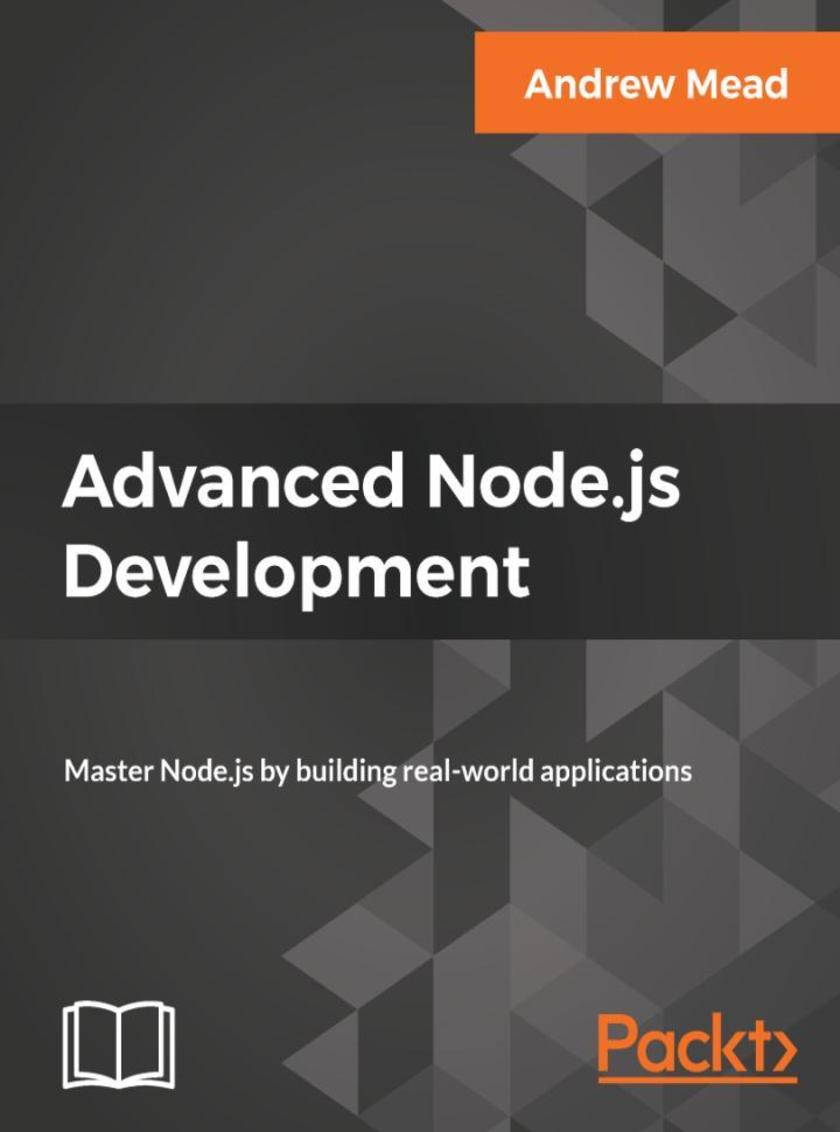
Advanced Node.js Development
¥73.02
Takes you through creating your own API, building a full real-time web app, securing your Node systems, and practical applications of the latest Async and Await technologies. It maps out everything in a comprehensive, easy-to-follow package designed to get you up and running quickly. About This Book ? Entirely project-based and practical ? Explains the "why" of Node.js features, not just the "how", providing with a deep understanding and enabling you to easily apply concepts in your own applications ? Covers the full range of technologies around Node.js – npm, MongoDB, version control with Git, and many more Who This Book Is For This book is for anyone looking to launch their own Node applications, switch careers, or freelance as a Node developer. You should have a basic understanding of JavaScript in order to follow this book. This book follows directly on from Learning Node.js Development, but more advanced readers can benefit from this book without having read the first part. What You Will Learn ? Develop, test, and deploy real-world Node.js applications ? Master Node.js by building practical, working examples ? Use awesome third-party Node modules such as MongoDB, Mongoose, Socket.io, and Express ? Create real-time web applications ? Explore async and await in ES7 In Detail Advanced Node.js Development is a practical, project-based book that provides you with all you need to progress as a Node.js developer. Node is a ubiquitous technology on the modern web, and an essential part of any web developer’s toolkit. If you're looking to create real-world Node applications, or you want to switch careers or launch a side-project to generate some extra income, then you're in the right place. This book was written around a single goal: turning you into a professional Node developer capable of developing, testing, and deploying real-world production applications. There's no better time to dive in. According to the 2018 Stack Overflow Survey, Node is in the top ten for back-end popularity and back-end salary. This book is built from the ground up around the latest version of Node.js (version 9.x.x). You'll be learning all the cutting-edge features available only in the latest software versions. This book delivers advanced skills that you need to become a professional Node developer. Along this journey you'll create your own API, you'll build a full real-time web app and create projects that apply the latest Async and Await technologies. Andrew Mead maps everything out for you in this book so that you can learn how to build powerful Node.js projects in a comprehensive, easy-to-follow package designed to get you up and running quickly. Style and approach This book is entirely project-based. From the very beginning, you'll be programming every single app and completing various challenges designed to help test and reinforce what you've learned. There's no copying-and-pasting here. This book is about writing code and building projects.
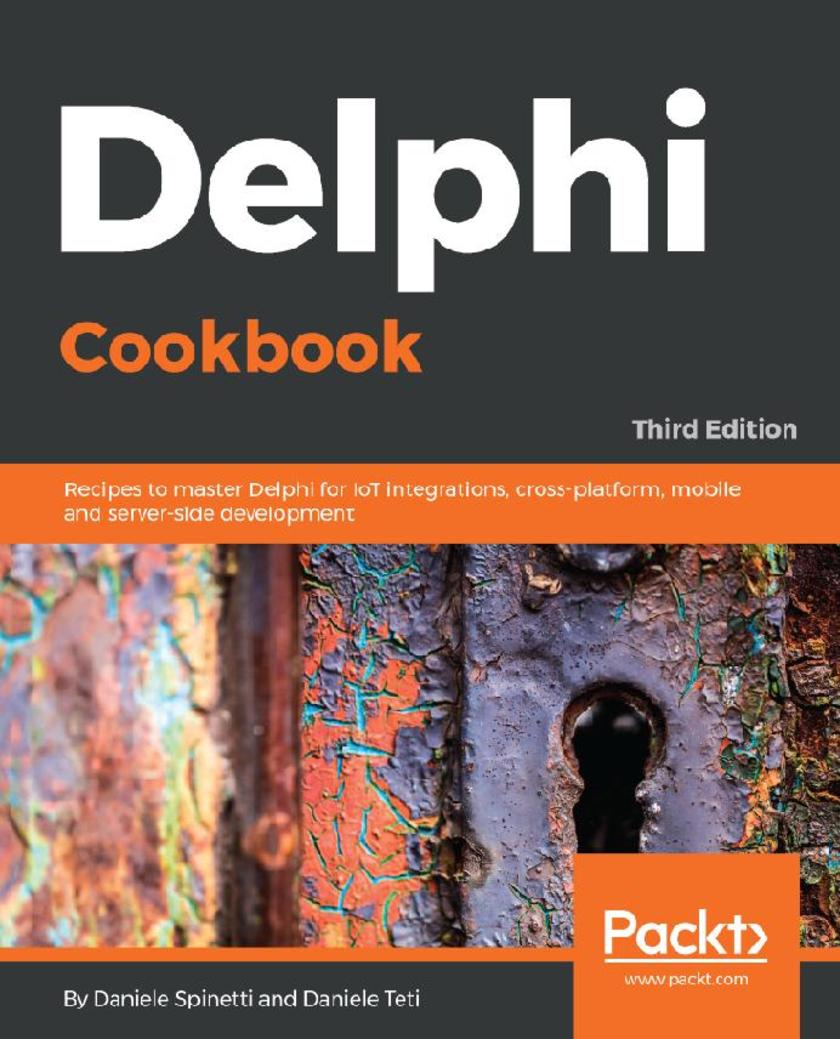
Delphi Cookbook,
¥87.19
A fast-paced guide to putting your GeoServer-based application into fast, user-friendly, and secure production Key Features * Resolve bottlenecks, optimize data stores, and cluster server resources * Use identity management and authentication for a user-specific, secure web application * Go beyond traditional web hosting to explore the full range of hosting options in the cloud Book Description GeoServer is open source, server-side software written in Java that allows users to share and edit geospatial data. In this book, you'll start by learning how to develop a spatial analysis platform with web processing services. Then you'll see how to develop an algorithm by chaining together geospatial analysis processes, which you can share with anyone in the world. Next you'll delve into a very important technique to improve the speed of your map application—tile caching. Here, you'll understand how tile caching works, how to develop an effective tile cache-supported web service, and how to leverage tile caching in your OpenLayers web application. Further on, you'll explore important tweaks to produce a performant GeoServer-backed web mapping application. Moving on, you'll enable authentication on the frontend and backend to protect sensitive map data, and deliver sensitive data to your end user. Finally, you'll see how to put your web application into production in a secure and user-friendly way. You'll go beyond traditional web hosting to explore the full range of hosting options in the cloud, and maintain a reliable server instance. What you will learn * Develop a WPS-processing service to allow web-based geospatial data processing * Get to know important techniques to improve the speed of your web map application—tile caching, raster data optimization, and server clustering * Find out which GeoServer settings resolve bottlenecks * Develop an algorithm by chaining geospatial analysis processes together * Put your application into production with hosting, monitoring, and automated backup and recovery * Understand how to develop an effective tile cache-supported web service * Master techniques that ensure resilient server deployment Who this book is for This book is for anyone who wants to learn about advanced interfaces, security, and troubleshooting techniques in GeoServer. A basic understanding of GeoServer is required
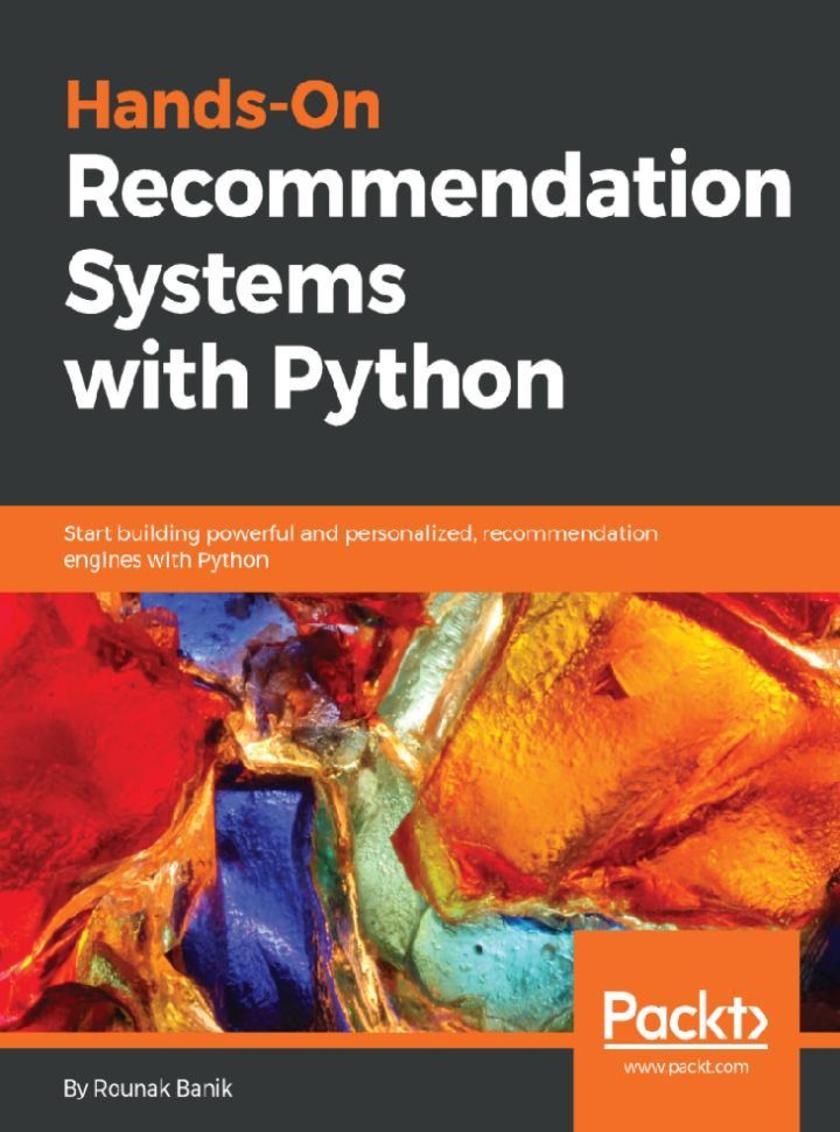
Hands-On Recommendation Systems with Python
¥52.31
Secure your Java applications by integrating the Spring Security framework in your code Key Features *Provide authentication, authorization and other security features for Java applications. *Learn how to secure microservices, cloud, and serverless applications easily *Understand the code behind the implementation of various security features Book Description Security is one of the most vital concerns for any organization. The complexity of an application is compounded when you need to integrate security with existing code, new technology, and other frameworks. This book will show you how to effectively write Java code that is robust and easy to maintain. Hands-On Spring Security 5 for Reactive Applications starts with the essential concepts of reactive programming, Spring Framework, and Spring Security. You will then learn about a variety of authentication mechanisms and how to integrate them easily with the Spring MVC application. You will also understand how to achieve authorization in a Spring WebFlux application using Spring Security.You will be able to explore the security confgurations required to achieve OAuth2 for securing REST APIs and integrate security in microservices and serverless applications. This book will guide you in integrating add-ons that will add value to any Spring Security module. By the end of the book, you will be proficient at integrating Spring Security in your Java applications What you will learn *Understand how Spring Framework and Reactive application programming are connected *Implement easy security confgurations with Spring Security expressions *Discover the relationship between OAuth2 and OpenID Connect *Secure microservices and serverless applications with Spring *Integrate add-ons, such as HDIV, Crypto Module, and CORS support *Apply Spring Security 5 features to enhance your Java reactive applications Who this book is for If you are a Java developer who wants to improve application security, then this book is for you. A basic understanding of Spring, Spring Security framework, and reactive applications is required to make the most of the book.

Hands-On Spring Security 5 for Reactive Applications
¥69.75
Learn every step you need for product design and development Key Features *Explore all the tools that you need to be a complete UX designer *Code the product designs you’ve created to become a full-stack designer *Build an amazing portfolio with real-world projects Book Description Designing user experience (UX) is one of the most important aspects of a project, as it has a direct effect on how customers think of your company. The process of designing a user experience is one of the most challenging yet rewarding aspects of product development. Hands-On UX Design for Developers will teach you how to create amazing user experiences for products from scratch. This book starts with helping you understand the importance of a good UX design and the role of a UX designer. It will take you through the different stages of designing a UX and the application of various principles of psychology in UX design. Next, you will learn how to conduct user research and market research, which is crucial to creating a great UX. You will also learn how to create user personas and use it for testing. This book will help you gain the ability to think like a UX designer and understand both sides of product development: design and coding. You will explore the latest tools, such as Sketch, Balsamiq, and Framer.js, to create wireframes and prototypes. The concluding chapters will take you through designing your UI, dealing with big data while designing a UX, and the fundamentals of frontend. Finally, you'll prepare your portfolio and become job ready in the UX arena. What you will learn *What UX is and what a UX designer does *Explore the UX Process and science of making products user-friendly *Create user interfaces and learn which tools to use *Understand how your design works in the real world *Create UI interaction, animation, wireframes, and prototypes *Design a product with users in mind *Develop a personal portfolio and be well-prepared to join the UX world Who this book is for Hands-On UX/UI Design for Developers is for web designers who have knowledge of basic UX design principles.
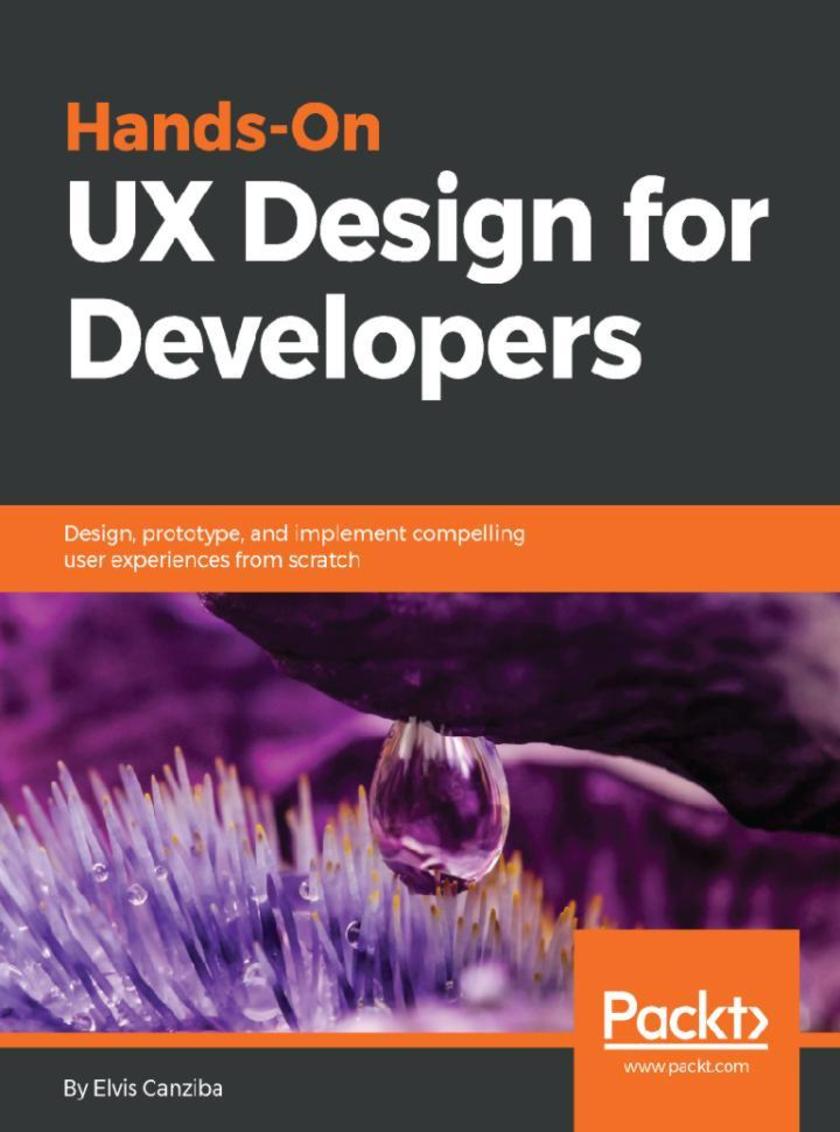
Hands-On UX Design for Developers
¥69.75
Add a touch of data analytics to your healthcare systems and get insightful outcomes Key Features *Perform healthcare analytics with Python and SQL *Build predictive models on real healthcare data with pandas and scikit-learn *Use analytics to improve healthcare performance Book Description In recent years, machine learning technologies and analytics have been widely utilized across the healthcare sector. Healthcare Analytics Made Simple bridges the gap between practising doctors and data scientists. It equips the data scientists’ work with healthcare data and allows them to gain better insight from this data in order to improve healthcare outcomes. This book is a complete overview of machine learning for healthcare analytics, briefly describing the current healthcare landscape, machine learning algorithms, and Python and SQL programming languages. The step-by-step instructions teach you how to obtain real healthcare data and perform descriptive, predictive, and prescriptive analytics using popular Python packages such as pandas and scikit-learn. The latest research results in disease detection and healthcare image analysis are reviewed. By the end of this book, you will understand how to use Python for healthcare data analysis, how to import, collect, clean, and refine data from electronic health record (EHR) surveys, and how to make predictive models with this data through real-world algorithms and code examples. What you will learn *Gain valuable insight into healthcare incentives, finances, and legislation *Discover the connection between machine learning and healthcare processes *Use SQL and Python to analyze data *Measure healthcare quality and provider performance *Identify features and attributes to build successful healthcare models *Build predictive models using real-world healthcare data *Become an expert in predictive modeling with structured clinical data *See what lies ahead for healthcare analytics Who this book is for Healthcare Analytics Made Simple is for you if you are a developer who has a working knowledge of Python or a related programming language, although you are new to healthcare or predictive modeling with healthcare data. Clinicians interested in analytics and healthcare computing will also benefit from this book. This book can also serve as a textbook for students enrolled in an introductory course on machine learning for healthcare.




 购物车
购物车 个人中心
个人中心



